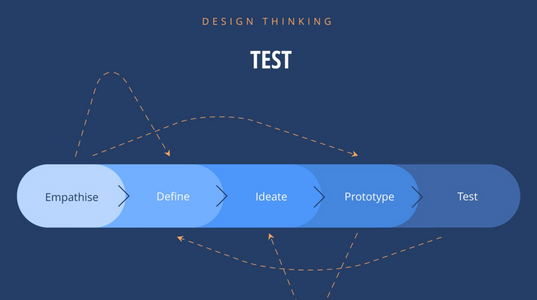Design Thinking Workshop
- Kevin Tan

- Jul 16, 2020
- 2 min read
Updated: Jul 28, 2020
On the 15th July 2020 we were given a talk by a guest speaker Chong Yong Yee from Design Thinker, to share about Design Thinking in the context of Social and Human.
Some of her point that she shares were quite interesting and really important as a designer to understand. So what is Design Thinking? Design Thinking is a process which seek the user to understand and redefine the problems in an alternative way. As a designer, it trains or create solution by using our design thinking mindset. Therefore, it provides a solutions-based approach to solve a problem for the user.
Here are the five important process of Design Thinking such as empathise, define, ideate, prototype and test. The unique part about it is that designers’ work processes can help us systematically extract, teach, learn and apply these human-centred techniques to solve problems in a creative and innovative way.
Design Thinking helps us to observe and develop empathy with the target user. It involves a specific phase for thinkers to gain an empathetic understanding of the problem at hand. Thus, this will helps to understand the people within the context of the design challenge. (Alscher, n.d.)
Design Thinkers combine the information they’ve gathered in the empathise stage and use that to identify the problem. The problem that identify should be written out in a problem statement and should have a focus around the user - to make it meaningful and actionable. (Alscher, n.d.)
Tackling the problems in human centric ways, creates many ideas in brainstorming session. This may even occur that it could take the combination of two or more ideas to create something better. Many solutions design thinkers can leverage as they try to come up with and organize fresh solutions and expand their way of thinking beyond the norm. (Alscher, n.d.)
This stage is to identify which of the solutions is the best possible one for the problem at hand. Each solution is created, tested and then either approved, rejected or adjusted before being tested again. After experimenting, designers will have a clearer idea of the problems being experienced and how easily that problem can be solved by design or with little effort from the user. (Alscher, n.d.)
Prototyping can often help cancel out some ideas, while bringing others to the forefront. In this phase of design thinking, the most favourable solution that was brought up in the prototyping phase is implemented and released into the wild. That’s why the final stage is called “Test” the result that the prototype phase produces is implemented and then used to help redefine the problem and continue to inform designers about the way a user will interact with the solution. (Alscher, n.d.)
As a designer it is important that we need to understand and look outside the box to have a better perspective of the people rather than just concentrating on a certain aspects when we are designing something.
Reference & citation
Alscher (n.d.) found that "Design Thinking vs. Visual Thinking: What Are They And How Do They Work Together?" Retrieved from https://visme.co/blog/design-thinking/


















Comments